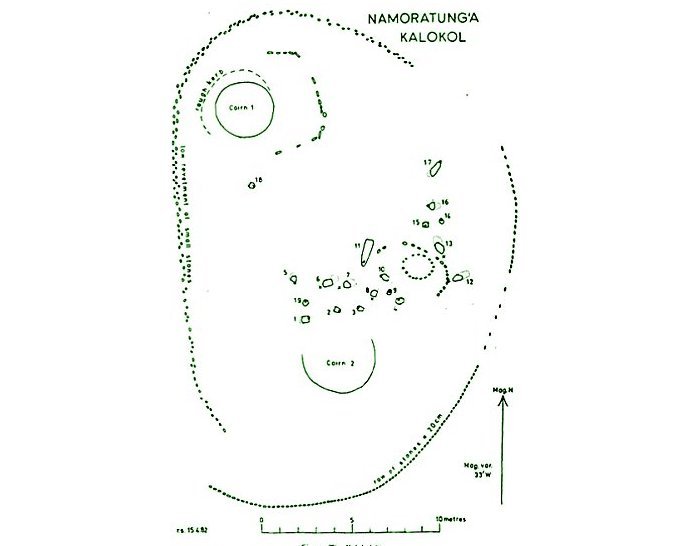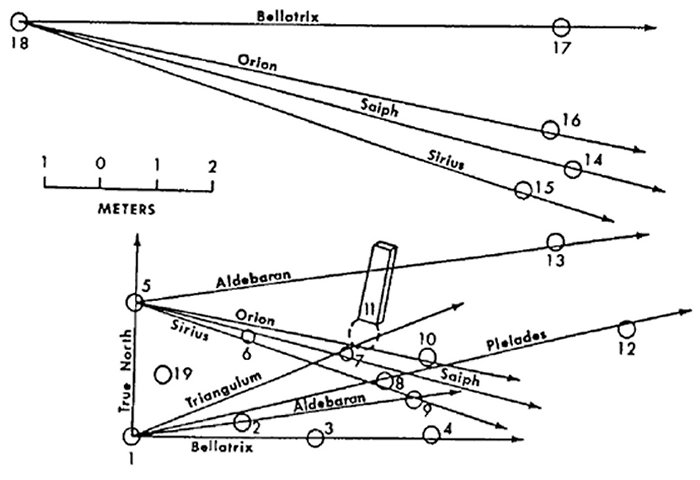Namoratunga – Kenya’s Fascinating Megalithic Site Oriented Toward Specific Stars And Constellations
A.Sutherland - AncientPages.com - There is a fascinating and entirely different megalithic site known as Namoratunga. The site is located on the west side of Lake Turkana in northwestern Kenya and is known as Namoratunga II (or the Kalokol Pillar Site), which means "People of Stone."
 Namoratunga in Turkana, Kenya. Image credit: Darouet - CC BY-SA 4.0
Namoratunga in Turkana, Kenya. Image credit: Darouet - CC BY-SA 4.0
It has alignments of 19 basalt pillars that are nonrandomly oriented toward certain stars and constellations. Interestingly, modern eastern Cushitic peoples use the same stars and constellations to calculate an accurate calendar.
The old Kenyan site dates to about 300 BC and suggests a prehistoric calendar based on detailed astronomical knowledge was in use in eastern Africa.
Legends Surround Namoratunga
According to legend, the pillars (found by the archaeological team in 1978) were once men but became petrified by the devil after failing their test. One story tells about a woman who came one day to the place and was dressed strangely, according to the locals. She wanted to dance and told the gathering people not to laugh at her as she danced. But they did, and she turned them into stones. Another legend claims that the devil would play a song, and anyone who showed emotions hearing it would be turned stone.
Local tradition says that the largest pillar is a chief, who had tried to outwit the devil and, in his victory, forgot about the 'no emotion' rule and smiled only for the devil to turn him into stone. The name "Dancing Stones" (Namoratunga, in Turkana language) came from the legend that sheepherders living in the area used to go to the site to dance and sing cradlesongs.
These are probably only ancient legends regarding the ancient site of Namoratunga, but the locals have feared the place and never went there over the years. Also, children were warned against going to the area because it was filled with evil spirits.
Magnetic Basalt Pillars Aligned With Seven Star Systems
Radiocarbon analysis dates Namoratunga II, and a related burial and rock art discovered approximately 130 miles south at Namoratunga I to 300 BC. (Namoratunga I contains a similar grave but no pillars.)
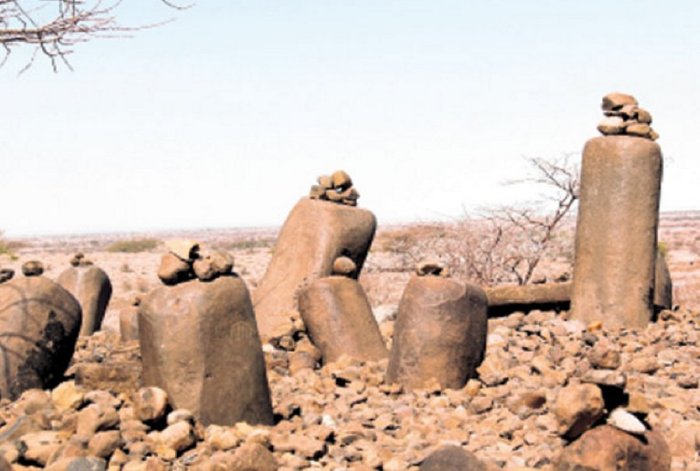 Namoratunga II. Image credit: Research drawing - image credit: Lynch, B. M., and L. H. Robbins. “Namoratunga: The First Archeoastronomical Evidence in Sub-Saharan Africa”
Namoratunga II. Image credit: Research drawing - image credit: Lynch, B. M., and L. H. Robbins. “Namoratunga: The First Archeoastronomical Evidence in Sub-Saharan Africa”
The site contains 19 magnetic basalt pillars, almost cylindrical, some tilted over, others fallen completely, and all arranged in rows forming a specific pattern. Each of the pillars has four facets and an inclined top. The pillars are aligned with 7 star systems: Triangulum, Pleiades, Bellatrix, Aldebaran, Central Orion, Saiph, and Sirius, and lean in different directions; their bases are littered with about 20,000 stones.
Namoratunga II. Image credit: Research drawing - image credit: Lynch, B. M., and L. H. Robbins. "Namoratunga: The First Archeoastronomical Evidence in Sub-Saharan Africa"
"The burial customs of the sub-Saharan people who used the cemetery resemble what is done today by the Konso, who live in the same general vicinity in southern Ethiopia. The calendar scheme of peoples related to the Konso may, in turn, help us confirm the intent of the builders of Namoratunga II. At the northern site, one setting of upright stones encircles a grave, like those at Namoratunga I, but the 19 other megaliths at Namoratunga II are arranged in an unusual pattern unconnected with any other burials." 1
The 12-Month 354-Day Lunar Calendar Of Cushitic Speakers Of Southern Ethiopia
At Namoratunga II, one setting of upright stones encircles an ancient grave, like those at Namoratunga I, according to research conducted by anthropologists at Michigan University, B. M. Lynch and L.H. Robbins.
Namoratunga II. Image credit: Research drawing - image credit: Lynch, B. M., and L. H. Robbins. “Namoratunga: The First Archeoastronomical Evidence in Sub-Saharan Africa”
The stones are placed relatively close to each other, separated at the most by 35 feet, usually less. Further, research states that Namoratunga represented an accurate and complex calendar system.
The late Mark Lynch (he died tragically as the victim of a hit-and-run accident in California in 1982) believed that the basalt pillars - surrounded by a circular formation of stones - link the constellations or stars to the 12-month 354-day lunar calendar of Cushitic speakers of southern Ethiopia.
Stone alignments relative to the seven stars at Namoratunga II. Image credit: Lynch, B. M., and L. H. Robbins. "Namoratunga: The First Archeoastronomical Evidence in Sub-Saharan Africa"
Alignments of the stones indicate the rising positions of bright stars – adapted to calendar keeping by ancient civilizations.
According to researchers, "the positions of key phases of the moon were intricately combined with zones of the sky that correspond to each star or asterism, in order of their use (Triangulum, the Pleiades, Aldebaran, Bellatrix, Orion's Belt, Saiph, and Sirius). Other months in a complex lunar cycle were coordinated with the position of the Triangulum with respect to staggered phases of the waning moon.
Stone alignments relative to the seven stars at Namoratunga II. Image credit: Lynch, B. M., and L. H. Robbins. “Namoratunga: The First Archeoastronomical Evidence in Sub-Saharan Africa”
The Konso speak a Cushitic language, and it is reasonable to believe the Namoratunga sites were erected by the ancestors of the present-day Eastern Cushities, who still employ a calendar now likely to be at least 7,000 years old. Namoratunga II is a modest site, relatively simple, with little there besides the alignments.
While it could have been used ritually, its layout and the diversity of its alignments seem more appropriate for systematic observation. Some of the same astronomical objects observed by the Namoratunga calendar keepers were used more than two millennia earlier by the Egyptian calendar priests. Richard A. Parker, a renowned authority on Egyptian astronomy and calendrics, established that the earliest Egyptian calendar was based on the moon and calibrated by the stars." 1
It is believed that the Namoratunga sites were erected by the ancestors of the present-day Eastern Cushites, who still live in this region of Africa.
Written by – A. Sutherland - AncientPages.com Senior Staff Writer
Updated on March 1, 2023
Copyright © AncientPages.com All rights reserved. This material may not be published, broadcast, rewritten or redistributed in whole or part without the express written permission of AncientPages.com
Expand for references- Krupp, E. C.. Echoes of the Ancient Skies
Lynch, B. M., and L. H. Robbins. “Namoratunga: The First Archeoastronomical
Evidence in Sub-Saharan Africa,” Science 200 (May 19, 1978): 766–768.
A monumental cemetery built by eastern Africa’s first herders near Lake Turkana, Kenya
More From Ancient Pages
-
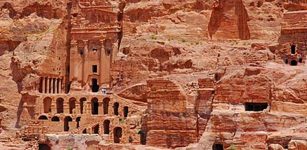 Skilled Nabataeans Celestially Aligned Petra’s Wonderful Architecture
Featured Stories | Mar 6, 2014
Skilled Nabataeans Celestially Aligned Petra’s Wonderful Architecture
Featured Stories | Mar 6, 2014 -
 Ancient Depictions Of Eyes Reveal The Untold Story Of The Human Race – Professor Discovered
Ancient Mysteries | Apr 19, 2019
Ancient Depictions Of Eyes Reveal The Untold Story Of The Human Race – Professor Discovered
Ancient Mysteries | Apr 19, 2019 -
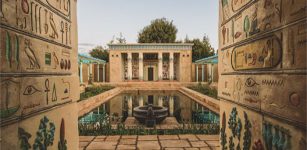 World’s First Recreated Ancient Egyptian Garden Is Now Open To The Public
News | May 17, 2022
World’s First Recreated Ancient Egyptian Garden Is Now Open To The Public
News | May 17, 2022 -
 Leonardo da Vinci’s Paradox Cracked
Ancient Technology | Jan 19, 2023
Leonardo da Vinci’s Paradox Cracked
Ancient Technology | Jan 19, 2023 -
 Mysterious Otherworldly Creatures Witnessed By Biblical Prophet – What Happened?
Ancient Mysteries | Jun 30, 2020
Mysterious Otherworldly Creatures Witnessed By Biblical Prophet – What Happened?
Ancient Mysteries | Jun 30, 2020 -
 DNA From Mysterious Hominin In China Suggests Native Americans’ East Asian Roots
Archaeology | Jul 14, 2022
DNA From Mysterious Hominin In China Suggests Native Americans’ East Asian Roots
Archaeology | Jul 14, 2022 -
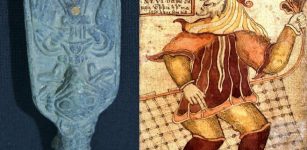 Rare Discovery Of Ancient Artifact Depicting Norse God Loki In Denmark Remains A Mystery
Archaeology | Jan 4, 2017
Rare Discovery Of Ancient Artifact Depicting Norse God Loki In Denmark Remains A Mystery
Archaeology | Jan 4, 2017 -
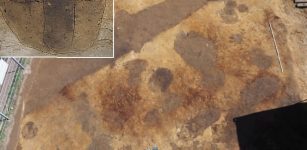 Roman Naval Base of Haltern in Germany Was Rebuilt Four Times 2,000 Years Ago
Archaeology | May 8, 2023
Roman Naval Base of Haltern in Germany Was Rebuilt Four Times 2,000 Years Ago
Archaeology | May 8, 2023 -
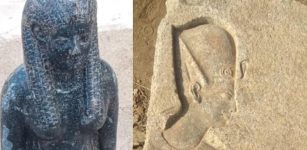 Artifacts Unearthed In Mit-Rahina, South Of Giza, Egypt
Archaeology | Jul 29, 2020
Artifacts Unearthed In Mit-Rahina, South Of Giza, Egypt
Archaeology | Jul 29, 2020 -
 Researchers Confirm Museum Shrunken Head As Human Remains
Archaeology | Aug 4, 2022
Researchers Confirm Museum Shrunken Head As Human Remains
Archaeology | Aug 4, 2022 -
 British Museum Is World’s Largest Receiver Of Stolen Goods – Says QC
Archaeology | Nov 12, 2019
British Museum Is World’s Largest Receiver Of Stolen Goods – Says QC
Archaeology | Nov 12, 2019 -
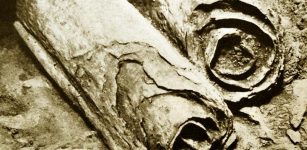 U.S. Bible Museum Says Five Dead Sea Scrolls Fragments In Their Collection Are Fake
Archaeology | Oct 25, 2018
U.S. Bible Museum Says Five Dead Sea Scrolls Fragments In Their Collection Are Fake
Archaeology | Oct 25, 2018 -
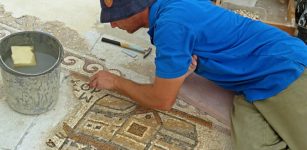 A Rare 1,500 Year Old Mosaic That Depicts Ancient Streets And Buildings in Egypt – Discovered
News | Sep 29, 2015
A Rare 1,500 Year Old Mosaic That Depicts Ancient Streets And Buildings in Egypt – Discovered
News | Sep 29, 2015 -
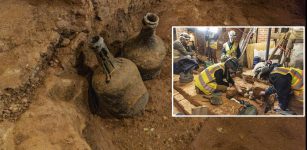 European-Made Sealed Bottles Of Cherries Dated To 18th Century Found At Washington’s Mount Vernon
Archaeology | Apr 23, 2024
European-Made Sealed Bottles Of Cherries Dated To 18th Century Found At Washington’s Mount Vernon
Archaeology | Apr 23, 2024 -
 North America’s First People May Have Arrived By Sea Ice Highway 24,000 Years Ago
Archaeology | Dec 16, 2023
North America’s First People May Have Arrived By Sea Ice Highway 24,000 Years Ago
Archaeology | Dec 16, 2023 -
 What Is The Codex Mendoza?
Ancient History Facts | Feb 14, 2016
What Is The Codex Mendoza?
Ancient History Facts | Feb 14, 2016 -
 Campus Mounds Are The Oldest Known Human-Made Structures In North America – New Research Shows
Archaeology | Aug 22, 2022
Campus Mounds Are The Oldest Known Human-Made Structures In North America – New Research Shows
Archaeology | Aug 22, 2022 -
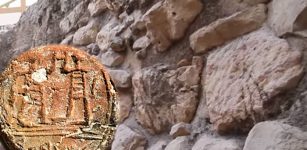 Unique 2,700-Year-Old Seal That Belonged To ‘Governor Of The City’ Of Jerusalem Discovered
Archaeology | Jan 2, 2018
Unique 2,700-Year-Old Seal That Belonged To ‘Governor Of The City’ Of Jerusalem Discovered
Archaeology | Jan 2, 2018 -
 Face Of Egyptian Man Who Lived 35,000 Years Ago Reconstructed
Archaeology | Apr 7, 2023
Face Of Egyptian Man Who Lived 35,000 Years Ago Reconstructed
Archaeology | Apr 7, 2023 -
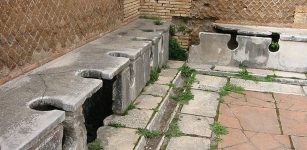 The Romans Spread Parasites – Their Hygienic Innovations Gave No Health Benefit
Archaeology | Jan 9, 2016
The Romans Spread Parasites – Their Hygienic Innovations Gave No Health Benefit
Archaeology | Jan 9, 2016

